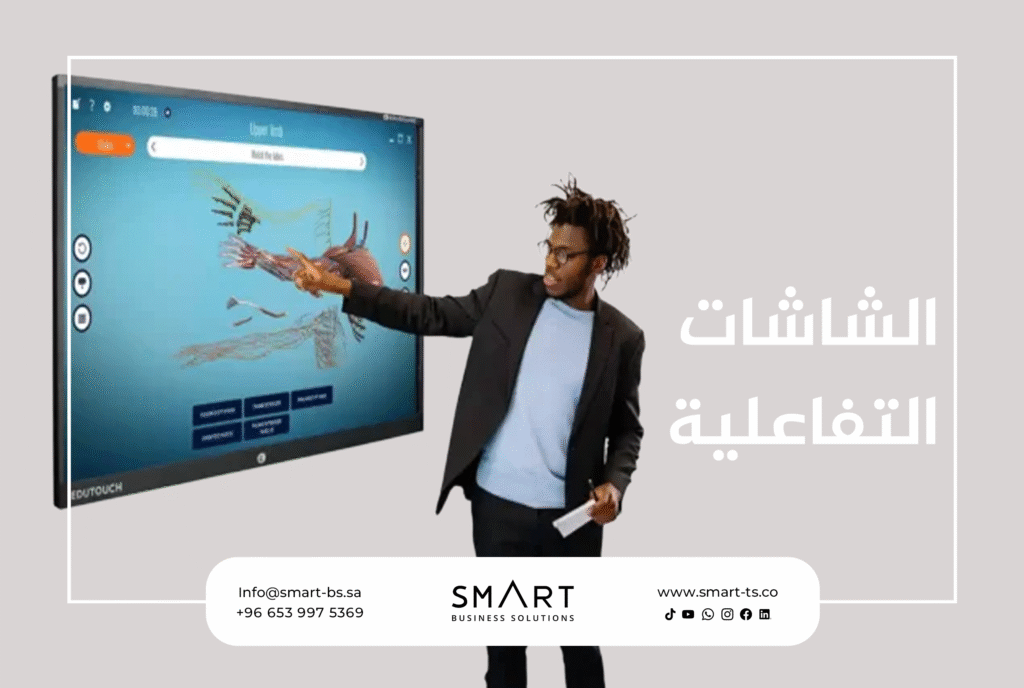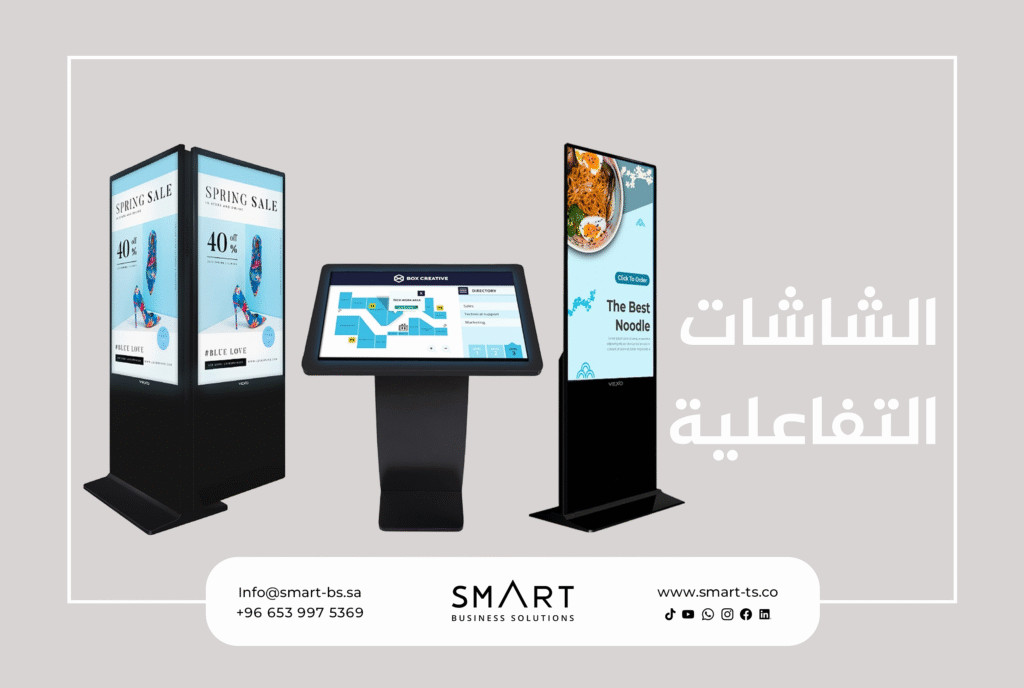Introduction: How Do Interactive Screens Revolutionize Work and Learning Environments?
Amid the accelerating digital transformation, interactive screens have emerged as one of the most powerful tools used in modern institutions to simplify display, enhance communication, and present content dynamically.
These smart screens combine technology with ease of use and enable direct engagement, whether in corporate settings, meeting rooms, or educational environments.


Interactive Screens Are Used to Present Content Visually and Dynamically
Organizations and companies utilize interactive screens to deliver presentations, diagrams, and real-time data in a visually engaging way, which helps:
- Improve content understanding
- Encourage participation and discussion
- Create more professional and impactful presentations
Example: During meetings, team members can interact with the content directly using their fingers or a stylus.
Multi-Touch Technology Is Used to Enhance Group Collaboration
Multi-touch technology allows multiple users to interact simultaneously, which is highly effective in:
- Smart classrooms
- Training sessions
- Innovation and brainstorming centers
Smart Displays Are Used to Streamline Meetings and Conferences
Modern companies increasingly rely on interactive smart screens in meeting rooms to:
- Take notes directly on the screen
- Share screens with local or remote participants
- Connect easily to laptops or mobile devices
These features help improve meeting productivity and accelerate decision-making.
In Educational Institutions, Interactive Screens Are Used to Support Digital Learning
Interactive screens are now integral to modern educational environments, offering:
- Hands-on lessons with touch interaction
- Access to digital teaching tools directly from the screen
- Student engagement through live problem-solving and activities
Built-In Software Is Used to Enhance the User Experience
Most modern interactive screens come with pre-installed software that helps users:
- Draw or annotate content clearly
- Split the screen for multiple views
- Record sessions for future reference
Modern Design and High Resolution Are Used to Elevate Visual Presence
These screens are known for their sleek designs and high-resolution displays (4K and above), making them ideal for:
- Front desk areas and product showcases
- Attracting clients and visitors
- Reinforcing the company’s modern and digital image
Conclusion: Interactive Screens Are Now Essential in the Digital Era
As smart technologies become central to business, education, and marketing, interactive screens are no longer optional tools.
They are essential for boosting engagement, improving productivity, and keeping pace with the digital future.

